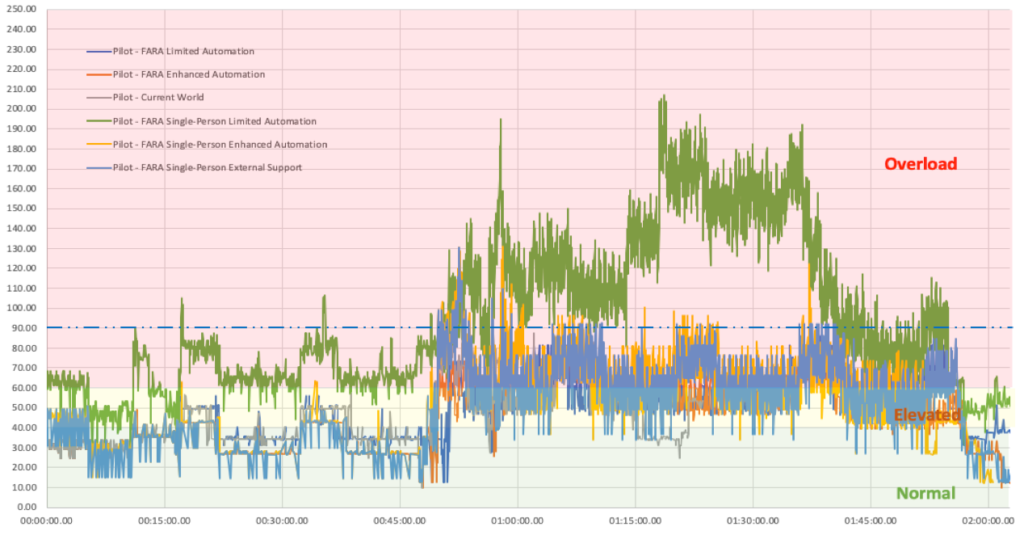Human Performance Modeling for Optimal Crewing
HF Designworks’ solution provides workload assessments to help integrate personnel and technologies for the Army’s Future Vertical Lift (FVL) program.
Technology Identification & Assessment:
Understanding the Army’s 2028 envisioned world and assessing state of the art technologies needed to meet FVL requirements and desired capabilities allowed us to illustrate how key technologies can be integrated to best aid aviators at critical times throughout mission phases.
Complex Requirements:
The Optimally Crewed Vehicle (OCV) concept introduces the notion of optionally crewed aircraft. For the Future Attack Reconnaissance Aircraft (FARA) platform this means crew options of two, one, or zero human operators in the cockpit. For extended reach, FARA operators will command advanced capabilities including small unmanned aircraft systems (sUAS) known as Air Launched Effects (ALEs).
Integrated Analysis:
The OCV research team is made up of a coalition of small companies, including Applied Decision Science, Roth Cognitive Engineering, Marimo Consulting, and HF Designworks. The team applied a complementary set of cognitive systems engineering methods (functional analysis, cognitive task analysis, and discrete event modeling) to identify crewing configurations that optimize human-system performance in attack and reconnaissance missions.
“We selected the IMPRINT Human Performance Modeling tool because it was developed with the help of the Army Research Laboratory (ARL) and is designed to work for Army systems. IMPRINT has representative models built in that we were able to leverage to start this effort including MOS information and attack and reconnaissance missions for the AH-64 Apache and OH-58 Kiowa, respectively.”
Scott Scheff, HF Designworks CEO
Leveraging IMPRINT for Human Performance Modeling:
Leveraging the Improved Performance Research Integration Tool (IMPRINT), we built mission models and evaluated the mental workload of two-person and single-person rotorcraft crews conducting attack and reconnaissance missions. We assessed current world and envisioned world settings in which FARA operators commanded a range of unmanned aircraft (different types including class II and III as well as ALEs). We explored the use of advanced automation, artificial intelligence, and decision aiding technologies to support operators in managing periods of excessive workload. IMPRINT models provided visualizations highlighting the impact of different crew-automation configurations on workload in the context of attack and reconnaissance missions.
Comprehensive Solutions:
We identified conditions in which single-person crews are most feasible, as well as critical technologies that will be needed to support both single-person and two-person crews in managing the complexity of the envisioned world. Findings are informing FARA requirements and our methodology could be used to help inform crewing and human automation interfaces for other FVL platforms.

